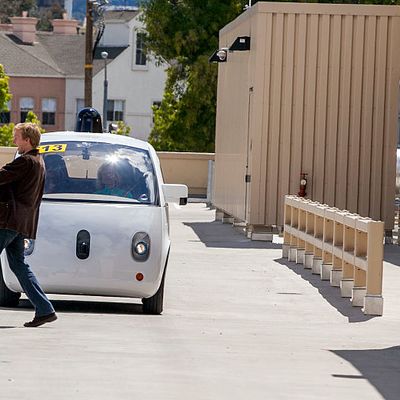
The major promise of self-driving cars (some scary moments from Uber’s fleet notwithstanding) is to bring some regularity to the roads. If anything, the problem faced by many autonomous vehicles is that human-controlled cars drive more aggressively and erratically than a self-driving car can anticipate. Even worse, pedestrians are a flighty bunch, ready to jump out from a curb without any warning at all. (Humans. We ruin everything!)
A patent filing spotted by the Mercury News shows that Waymo — the self-driving car division of Google’s holding company Alphabet — is trying to solve for potential crosswalk collisions by creating cars that would automatically become less rigid in a crash.
Or, as the Mercury News more memorably puts it:
If someone was going to whack you in the head with a turkey drumstick, would you want the drumstick to be frozen or thawed? Clearly, you’d want the thawed drumstick because it would have more give.
In a patent granted August 8, Waymo states: “The force of the vehicle’s impact is a primary factor in the amount of damage that is caused by the vehicle. Accordingly, it is desirable to design a vehicle that can reduce the force of impact experienced during a collision.”
In practice, this means Waymo cars would use cables or rods to keep the car’s body rigid during normal operation. But if Waymo senses that a collision is imminent, it would make those cables and rods go slack, creating more give in the car’s body and, perhaps, preventing more serious injury.
It bears a passing resemblance to “crumple zones,” a safety feature first rolled out by Mercedes-Benz in 1951 and now standard throughout the auto industry, in which parts of a car crumple during a collision, dissipating the kinetic energy of a car wreck before it reaches the drivers and passengers — though it’s unclear whether this would make things safer for the driver inside the Waymo vehicle.
Regardless, it sounds more appealing than the “flypaper” idea Google put forward in mid-2016, in which self-driving cars would be coated with a sticky substance, preventing people from flying forward after being struck by a car. It was, perhaps, a theoretically sound idea, but the mental image of pedestrians stuck to the hoods of autonomous vehicles likely would not have hastened the arrival of self-driving cars.





























